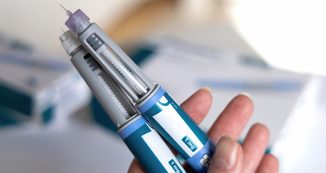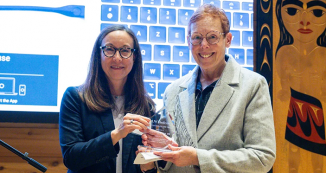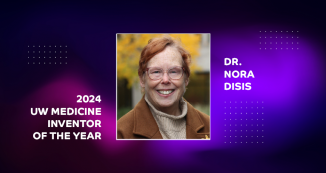27 Aug Heart Failure Studies Evaluate Cellular Treatment Options
 Formation of scar tissue in the human heart is one of the leading causes of heart failure, a condition for which there are very few treatment options.
Formation of scar tissue in the human heart is one of the leading causes of heart failure, a condition for which there are very few treatment options.
Dr. April Stempien-Otero, an Associate Professor of Medicine in the UW Division of Cardiology and Attending Physician at UW Medical Center, is seeking to add to these treatment options. She is studying the effects of grafting bone marrow stem cells into failing hearts. If successful, she hopes to safely increase blood vessel formation in those hearts while also reducing scarring and cell death.
“There is no treatment for scar tissue in the heart, which leaves me wishing I could do something more for many of the patients I see,” said Dr. Stempien-Otero. “Through this research, I hope to be able to bring basic science and the clinical sides together to better treat patients with end stage heart disease.”
Dr. Stempien-Otero’s initial study involved a series of patients who required implantation of a Left Ventricular Assist Device (LVAD) to stabilize their heart function and blood flow. On the day before LVAD implantation, bone marrow was removed from the patient and stem cells were extracted. Dr. Stempien-Otero’s team then injected these bone marrow-derived stem cells into the surface of the heart as the patient underwent LVAD placement.
When processing the bone marrow, Dr. Stempien-Otero turned to the Gene and Cell Therapy Lab (GCTL) at the Institute of Translational Health Sciences for support. ITHS staff used a CliniMACS® device within an ISO7 facility to separate the needed stem cells for transplantation. They also helped Dr. Stempien-Otero to prepare and submit her Investigational New Drug (IND) application to the Food and Drug Administration and then maintain the IND over the course of her clinical trial.
“I really appreciated that they could do all the troubleshooting on standard operating procedures for my protocol,” shared Dr. Stempien-Otero about the ITHS GCTL staff. “They had the experience and expertise to work with me to refine the protocol to make it as safe as possible. Their support with the preparation of the IND was also incredibly helpful.”
The patients in Dr. Stempien-Otero’s initial study went on to receive heart transplants, at which point microscopic tissue studies were performed to determine whether the stem cell treatments were effective. Small improvements were noted in scar tissue reduction and in cell formation, but no improvement was seen in the formation of blood vessels.
Based on these results, Dr. Stempien-Otero is conducting a second study to determine the turnover rate of cardiac muscle cells in patients between the time of LVAD placement and heart transplantation. Once complete, she believes these study results will allow her to more accurately measure baseline heart functions in patients with end stage heart disease. She will then be better prepared to design subsequent studies evaluating the use of stem cells as a possible treatment option for this classification of patients.







